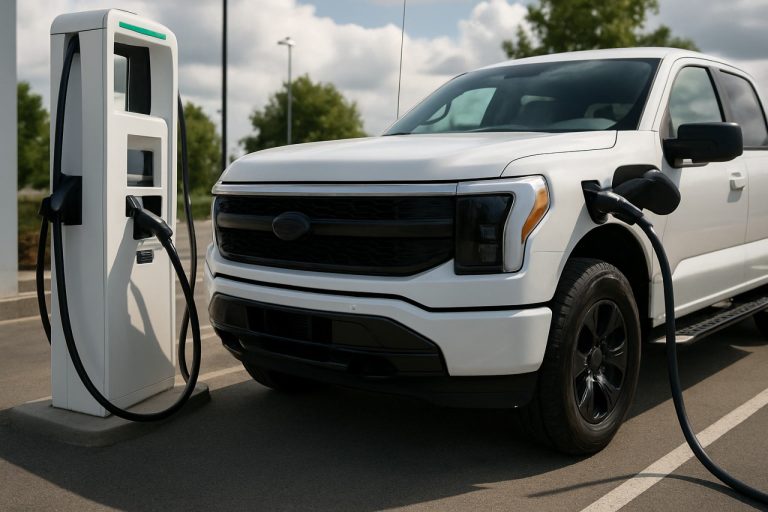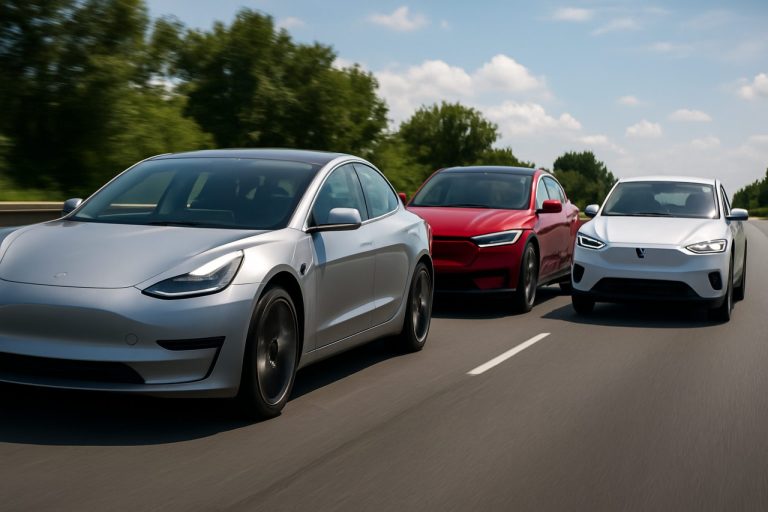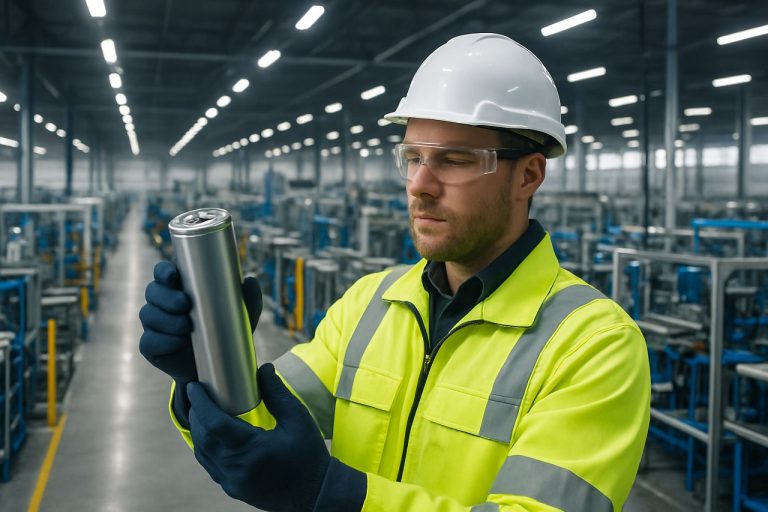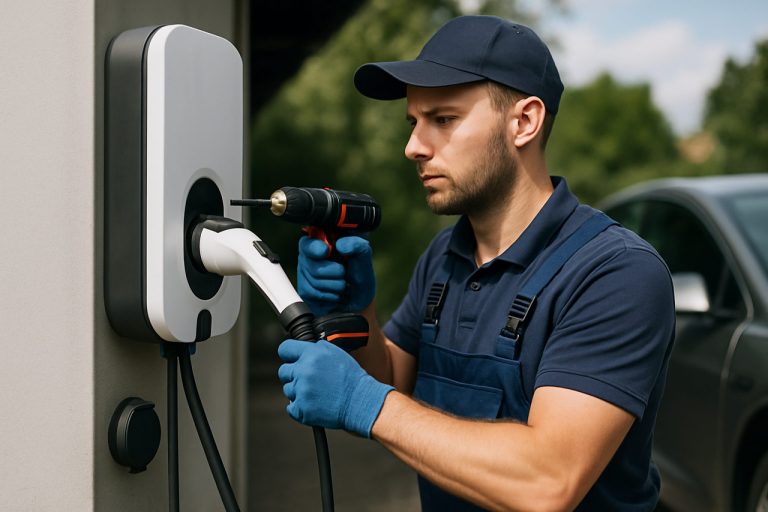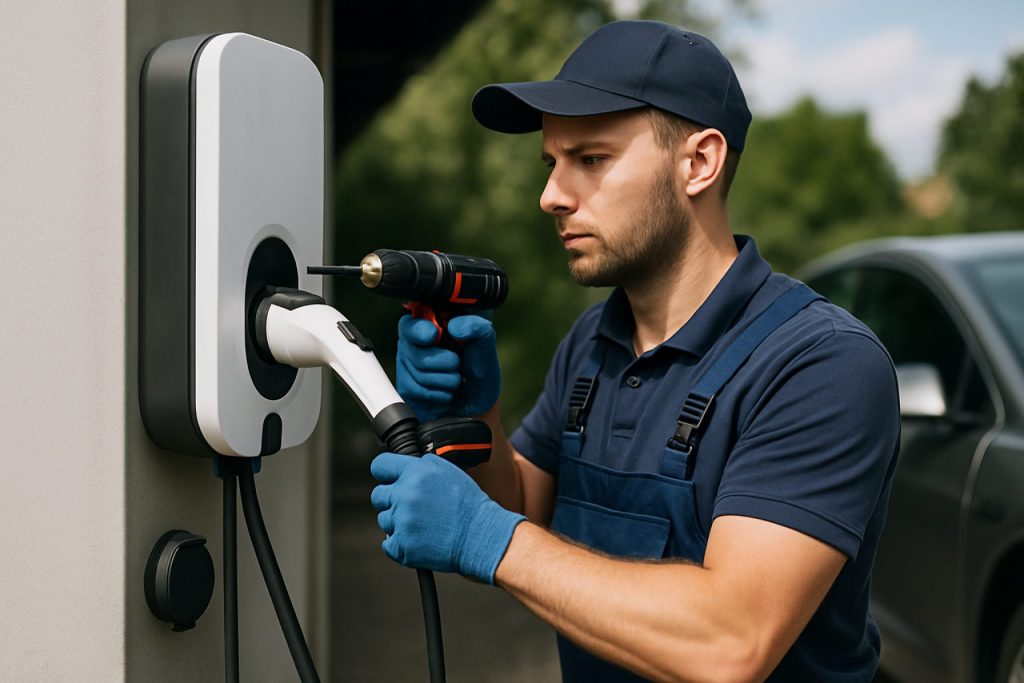
EV Charger Installers in 2025: Unleashing Rapid Expansion and Smart Infrastructure. Discover How Installers Are Shaping the Future of Electric Mobility Over the Next Five Years.
- Executive Summary: Key Trends and Market Drivers
- 2025 Market Size and 3–5 Year Growth Forecast (30% CAGR)
- Competitive Landscape: Leading Installers and New Entrants
- Technological Innovations: Smart Charging, V2G, and Fast-Charge Solutions
- Policy, Regulation, and Incentives Impacting Installers
- Residential vs. Commercial Installation: Shifting Demand Patterns
- Supply Chain and Workforce Challenges
- Partnerships with Automakers and Utilities
- Sustainability and Grid Integration Initiatives
- Future Outlook: Opportunities and Strategic Recommendations
- Sources & References
Executive Summary: Key Trends and Market Drivers
The market for EV charger installers is experiencing rapid transformation in 2025, driven by surging electric vehicle (EV) adoption, ambitious government policies, and significant investments from both public and private sectors. As global EV sales continue to break records, the demand for reliable, scalable, and efficient charging infrastructure has become a central focus for automakers, utilities, and infrastructure specialists alike.
A key trend shaping the sector is the acceleration of public and private charging network expansion. Major automakers such as Tesla, Inc. are not only manufacturing EVs but also investing heavily in proprietary charging networks, with Tesla’s Supercharger network remaining a benchmark for fast-charging reliability and coverage. Meanwhile, companies like ABB Ltd and Siemens AG are leading the supply of advanced charging hardware and digital solutions, supporting both urban and highway corridor installations.
Government initiatives are a primary market driver. In the United States, the National Electric Vehicle Infrastructure (NEVI) program is channeling billions of dollars into state-level charging projects, with a strong emphasis on interoperability and accessibility. The European Union’s Alternative Fuels Infrastructure Regulation (AFIR) mandates minimum charging station densities along major transport routes, further accelerating installer activity. These policies are creating a robust pipeline of installation projects, with a focus on both high-speed DC fast chargers and widespread AC charging points.
Another significant trend is the entry of traditional energy and utility companies into the EV charging installation market. Firms such as BP p.l.c. (through its bp pulse division) and Shell plc are rapidly scaling their charging networks, leveraging their existing real estate and energy expertise. This convergence is fostering new business models, including integrated energy management and smart charging solutions, which are increasingly demanded by fleet operators and commercial property owners.
Looking ahead, the outlook for EV charger installers remains highly positive. The International Energy Agency projects that the number of public charging points worldwide will need to increase at least tenfold by 2030 to meet climate targets. In the next few years, the sector will see heightened competition, technological innovation (such as ultra-fast charging and vehicle-to-grid integration), and a growing emphasis on skilled workforce development to meet installation and maintenance needs. As a result, EV charger installers are positioned as critical enablers of the global transition to electric mobility.
2025 Market Size and 3–5 Year Growth Forecast (30% CAGR)
The market for EV charger installers is experiencing rapid expansion in 2025, driven by surging electric vehicle (EV) adoption, government incentives, and ambitious infrastructure targets. The global EV charging infrastructure market is projected to grow at a compound annual growth rate (CAGR) of approximately 30% over the next three to five years, with installer services representing a critical segment of this ecosystem. This growth is underpinned by both public and private investments, as well as the entry of major energy and automotive companies into the installation space.
In 2025, the demand for professional EV charger installation services is being propelled by several key factors. Firstly, governments in North America, Europe, and Asia are implementing aggressive policies to phase out internal combustion engine vehicles and expand charging networks. For example, the United States has committed billions of dollars to EV infrastructure through federal programs, with a significant portion allocated to installation and maintenance of charging stations. Similarly, the European Union’s Alternative Fuels Infrastructure Regulation (AFIR) mandates minimum charging capacities along major transport corridors, further boosting installer demand.
Major industry players are scaling up their installer networks to meet this demand. Tesla, Inc. continues to expand its Supercharger and Destination Charger networks, relying on certified installers for both residential and commercial projects. ABB Ltd., a global leader in electrification, is investing in training and certifying installers for its fast-charging solutions, while Siemens AG is partnering with utilities and fleet operators to deploy large-scale charging infrastructure. ChargePoint Holdings, Inc. and Wallbox N.V. are also expanding their installer programs, focusing on both home and workplace charging.
The installer market is also seeing increased participation from traditional electrical contractors and new specialist firms. These companies are investing in workforce training and certification to keep pace with evolving technology and safety standards. Industry bodies such as the Institute of Electrical and Electronics Engineers (IEEE) and National Electrical Manufacturers Association (NEMA) are supporting this growth by developing guidelines and best practices for safe and efficient charger installation.
Looking ahead, the outlook for EV charger installers remains robust. As automakers like Ford Motor Company and Volkswagen AG accelerate their electrification strategies, the need for widespread, reliable charging infrastructure will intensify. This will sustain high growth rates for installer services, with the market expected to maintain or even exceed a 30% CAGR through 2028, especially as new technologies such as ultra-fast charging and vehicle-to-grid integration become mainstream.
Competitive Landscape: Leading Installers and New Entrants
The competitive landscape for EV charger installers in 2025 is characterized by rapid expansion, consolidation, and the emergence of new players responding to surging demand for electric vehicle infrastructure. As governments and automakers accelerate electrification targets, the installation sector is experiencing both increased competition and strategic partnerships.
Among the established leaders, ChargePoint remains a dominant force in North America and Europe, leveraging its extensive network and partnerships with automakers and fleet operators. The company continues to expand its installer network, focusing on both public and private charging solutions. Similarly, Blink Charging has grown its installation services through direct deployments and collaborations with property owners, municipalities, and commercial clients, aiming to increase its footprint in the U.S. and select international markets.
In Europe, IONITY—a joint venture of major automakers—has been instrumental in deploying high-power charging corridors across the continent, often working with local installation partners to accelerate rollout. Enel X, a subsidiary of the Italian energy giant Enel, is another key player, offering turnkey installation services for residential, commercial, and public charging infrastructure, with a strong presence in Italy, Spain, and Latin America.
New entrants are also reshaping the installer landscape. Energy utilities such as EDF and E.ON are leveraging their grid expertise and customer bases to offer integrated EV charging installation services, often bundled with renewable energy solutions. Meanwhile, automotive OEMs like Tesla continue to expand their proprietary Supercharger and Destination Charger networks, relying on in-house teams and certified third-party installers to meet growing demand.
The sector is also witnessing increased activity from electrical contractors and facility management firms, who are upskilling to capture opportunities in both urban and rural markets. Companies such as Siemens and ABB are not only manufacturing charging hardware but also providing end-to-end installation and maintenance services, often in partnership with local installers.
Looking ahead, the competitive landscape is expected to intensify as public funding, regulatory mandates, and private investment drive further market entry and consolidation. The ability to offer scalable, reliable, and integrated installation services—often bundled with software, maintenance, and energy management—will be a key differentiator for both incumbents and new entrants in the coming years.
Technological Innovations: Smart Charging, V2G, and Fast-Charge Solutions
The landscape for EV charger installers in 2025 is being rapidly transformed by technological innovations, particularly in smart charging, vehicle-to-grid (V2G) integration, and fast-charging solutions. These advancements are not only shaping the technical requirements for installation but also redefining the business models and partnerships within the sector.
Smart charging infrastructure is becoming a standard expectation, driven by the need for grid optimization and user convenience. Installers are increasingly working with hardware and software providers to deploy chargers that can communicate with energy management systems, schedule charging during off-peak hours, and respond dynamically to grid signals. Companies such as ABB and Siemens are at the forefront, offering smart charging solutions that integrate with building energy management and utility platforms. These systems often require specialized installation expertise, including network configuration and cybersecurity measures, expanding the technical scope for installers.
V2G technology is gaining traction, especially in regions with high renewable energy penetration. Installers are now tasked with deploying bi-directional chargers that enable EVs to discharge electricity back to the grid or a building, supporting grid stability and providing new revenue streams for EV owners. Nissan has been a pioneer in V2G pilots, and charger manufacturers like Wallbox are commercializing V2G-capable units. The installation of such systems requires additional coordination with utilities and compliance with evolving grid codes, presenting both challenges and opportunities for skilled installers.
Fast-charging solutions, particularly DC fast chargers (DCFC) and ultra-fast chargers (150 kW and above), are seeing accelerated deployment in 2025. The push for rapid charging at public and commercial sites is led by companies such as Tesla with its Supercharger network, and Electrify America, which is expanding high-power charging corridors. Installation of these systems involves complex electrical work, including high-capacity grid connections, transformer upgrades, and advanced cooling systems. As a result, the demand for certified and experienced installers is rising, with many companies offering specialized training and certification programs.
Looking ahead, the integration of smart, V2G, and fast-charging technologies is expected to become the norm, driving further specialization among EV charger installers. Partnerships between charger manufacturers, utilities, and installation firms are likely to deepen, as the industry moves toward more interconnected and intelligent charging ecosystems.
Policy, Regulation, and Incentives Impacting Installers
The policy landscape for EV charger installers in 2025 is shaped by a combination of national targets, regulatory frameworks, and incentive programs designed to accelerate the deployment of electric vehicle (EV) charging infrastructure. Governments in North America, Europe, and Asia-Pacific are intensifying their efforts to support the transition to electric mobility, directly impacting the demand for skilled installers and the standards they must meet.
In the United States, the Bipartisan Infrastructure Law (BIL) and the National Electric Vehicle Infrastructure (NEVI) Formula Program are central to federal support for EV charging. The NEVI program allocates $5 billion over five years to help states build a national network of 500,000 public chargers by 2030, with a strong emphasis on reliable installation and maintenance. Installers must comply with federal requirements regarding charger uptime, interoperability, and accessibility, as well as Buy America provisions for equipment sourcing. These regulations are overseen by the U.S. Department of Transportation and the U.S. Department of Energy, which also provide technical assistance and workforce development resources.
At the state level, California continues to lead with aggressive zero-emission vehicle (ZEV) mandates and funding through programs like the California Electric Vehicle Infrastructure Project (CALeVIP). Installers in California must adhere to state-specific codes, permitting processes, and grid integration requirements, often working closely with utilities such as Pacific Gas and Electric Company and Southern California Edison to ensure grid reliability and access to incentives for both residential and commercial installations.
In the European Union, the Alternative Fuels Infrastructure Regulation (AFIR), effective from 2025, sets binding targets for the deployment of public charging points along major transport corridors and urban areas. Installers must meet harmonized technical standards for charger connectivity, payment systems, and data sharing, as mandated by the European Union. National governments supplement these requirements with grants, tax credits, and streamlined permitting to accelerate installation rates.
Asia-Pacific markets, particularly China, are also expanding regulatory oversight. The Chinese government, through agencies like the National Development and Reform Commission, enforces strict technical standards and safety codes for charger installation, while offering subsidies to both installers and end-users to boost network density.
Looking ahead, the policy environment is expected to become more stringent, with increased focus on installer certification, cybersecurity, and integration with renewable energy sources. Installers who adapt to evolving regulations and leverage available incentives will be well-positioned to capitalize on the rapid growth in EV adoption through 2025 and beyond.
Residential vs. Commercial Installation: Shifting Demand Patterns
The landscape for EV charger installers is undergoing a significant transformation in 2025, as demand patterns shift between residential and commercial installation segments. Historically, residential installations dominated the market, driven by early EV adopters seeking home charging convenience. However, as electric vehicle (EV) adoption accelerates and government policies increasingly target public charging infrastructure, commercial installations are rapidly gaining momentum.
In the residential sector, leading manufacturers such as Tesla and Wallbox continue to see robust demand for home charging solutions, particularly Level 2 chargers. The proliferation of new EV models and incentives for home charger installation have sustained this growth. For example, Tesla’s Wall Connector remains a popular choice for homeowners, supported by a network of certified installers. Similarly, Wallbox has expanded its installer partnerships to meet rising demand in North America and Europe.
However, the commercial segment is experiencing a pronounced surge in 2025, fueled by several converging factors. Fleet electrification, workplace charging initiatives, and regulatory requirements for new buildings to include EV infrastructure are driving a wave of installations at offices, retail centers, and multi-unit dwellings. Companies like ChargePoint and Blink Charging are at the forefront, offering scalable solutions for commercial clients and partnering with property developers and businesses to deploy large-scale charging networks.
The shift is further underscored by government programs and funding aimed at expanding public charging access. In the United States, the National Electric Vehicle Infrastructure (NEVI) program is channeling billions into public charging corridors, creating substantial opportunities for commercial installers. Similarly, in Europe, regulations such as the Alternative Fuels Infrastructure Regulation (AFIR) are mandating minimum charging infrastructure in public and semi-public spaces, accelerating commercial deployment.
Looking ahead, industry outlooks suggest that while residential installations will remain important, the commercial segment will outpace it in growth rate over the next few years. This is due to the scaling needs of urban environments, the electrification of commercial fleets, and the increasing expectation of ubiquitous public charging. As a result, EV charger installers are adapting their business models, expanding technical capabilities, and forming strategic alliances to capture opportunities in both segments, with a growing emphasis on commercial projects.
Supply Chain and Workforce Challenges
The rapid expansion of electric vehicle (EV) infrastructure in 2025 is intensifying both supply chain and workforce challenges for EV charger installers. As governments and automakers accelerate electrification targets, the demand for reliable, high-capacity charging networks is surging, placing unprecedented pressure on the ecosystem responsible for deploying and maintaining these systems.
A primary supply chain challenge is the sourcing of critical components such as power modules, semiconductors, and specialized cabling. Global disruptions in electronics manufacturing, exacerbated by ongoing geopolitical tensions and raw material shortages, have led to extended lead times for key parts. Major charger manufacturers like ABB and Siemens have publicly acknowledged these constraints, noting that delivery timelines for some hardware have doubled compared to pre-2022 levels. Additionally, the need for region-specific components—such as grid interface modules and payment systems—further complicates procurement and inventory management for installers.
On the workforce front, the industry faces a pronounced shortage of qualified electricians and technicians trained in high-voltage EV infrastructure. The installation of Level 2 and especially DC fast chargers requires specialized skills in electrical engineering, site assessment, and compliance with evolving safety standards. Organizations such as ABB and Siemens have launched internal training programs and partnerships with technical colleges to address this gap, but the pace of workforce development is struggling to keep up with market demand. According to industry estimates, the U.S. alone will need tens of thousands of additional certified installers by 2027 to meet federal and state deployment goals.
Logistical bottlenecks also persist. The coordination between utilities, permitting authorities, and installation teams often results in project delays. For example, ChargePoint Holdings, Inc., a leading network operator and installer, has highlighted the complexity of aligning utility upgrades with charger deployment schedules, especially in urban areas where grid capacity is limited.
Looking ahead, the outlook for 2025 and beyond suggests that supply chain and workforce challenges will remain significant, though targeted investments and policy support may help alleviate some constraints. Initiatives to localize component manufacturing, streamline permitting, and expand workforce training are underway, but their impact will likely be gradual. As the EV market matures, the ability of charger installers to adapt to these evolving challenges will be critical to the pace and reliability of infrastructure rollout.
Partnerships with Automakers and Utilities
The landscape for EV charger installers in 2025 is increasingly defined by strategic partnerships with automakers and utilities, as both sectors recognize the necessity of robust charging infrastructure to support accelerating electric vehicle (EV) adoption. These collaborations are shaping the deployment, accessibility, and technological advancement of charging networks across North America, Europe, and Asia.
Automakers are actively forging alliances with leading EV charger installers to ensure seamless charging experiences for their customers. For example, Tesla, Inc. continues to expand its Supercharger network, not only for its own vehicles but, as of 2024, opening select Supercharger sites to non-Tesla EVs in the U.S. and Europe. This move is facilitated by partnerships with charging hardware and software providers, as well as agreements with other automakers to standardize charging connectors and payment systems. Similarly, Ford Motor Company and General Motors Company have announced collaborations with charging network operators and installers to provide their customers with access to thousands of public chargers, including integration with home charging solutions.
Utilities are also playing a pivotal role, recognizing that widespread EV adoption will impact grid demand and stability. Many utilities are partnering with charger installers to deploy public and residential charging stations, often offering incentives or rebates to accelerate installation. For instance, Southern Company and Duke Energy have launched programs to support the installation of Level 2 and DC fast chargers, working closely with certified installers to ensure grid compatibility and smart charging capabilities. These partnerships often include data-sharing agreements to optimize charging times and reduce peak load impacts.
Charger manufacturers and network operators such as ChargePoint Holdings, Inc., Blink Charging Co., and EVBox Group are at the center of these partnerships, providing both the hardware and the expertise for large-scale deployment. They frequently collaborate with automakers to integrate charging solutions into vehicle purchase packages and with utilities to ensure installations meet regulatory and technical standards.
Looking ahead, the outlook for 2025 and beyond suggests that such partnerships will intensify, driven by government mandates for zero-emission vehicles and funding for charging infrastructure. The convergence of automaker, utility, and installer interests is expected to accelerate the rollout of interoperable, user-friendly charging networks, supporting the projected surge in EV sales and laying the groundwork for smart grid integration and vehicle-to-grid technologies.
Sustainability and Grid Integration Initiatives
The rapid expansion of electric vehicle (EV) infrastructure in 2025 is driving significant sustainability and grid integration initiatives among EV charger installers. As governments and industry stakeholders intensify efforts to decarbonize transportation, installers are increasingly required to align with both environmental goals and evolving grid requirements. This shift is evident in the adoption of renewable energy integration, smart charging technologies, and collaborative projects with utilities.
A key trend is the deployment of EV charging stations powered by renewable energy sources. Leading manufacturers and installers, such as ABB and Siemens, are equipping their charging solutions with solar canopies and energy storage systems to minimize reliance on fossil fuels. These systems not only reduce the carbon footprint of charging operations but also provide resilience during grid disruptions. For example, Siemens has announced partnerships with solar providers to integrate photovoltaic panels at charging sites, supporting both sustainability and energy independence.
Grid integration is another critical focus area. As EV adoption accelerates, the load on local grids is increasing, prompting installers to implement smart charging and demand response capabilities. Companies like ChargePoint and EVBox are deploying networked chargers that communicate with utilities to optimize charging times, balance grid loads, and enable vehicle-to-grid (V2G) services. These technologies allow EVs to act as distributed energy resources, feeding electricity back to the grid during peak demand and drawing power during off-peak hours.
Collaboration with utilities and grid operators is becoming standard practice. Tesla is expanding its Supercharger network with integrated battery storage and grid services, while Enel X is working with energy providers to pilot V2G projects in Europe and North America. These initiatives are designed to enhance grid stability, reduce infrastructure upgrade costs, and support the transition to renewable energy.
Looking ahead, regulatory frameworks are expected to further incentivize sustainable practices and grid-friendly installations. Installers will need to comply with stricter energy efficiency standards and participate in grid services markets. The convergence of sustainability and grid integration is set to define the next phase of EV infrastructure deployment, with installers playing a pivotal role in enabling a cleaner, more resilient energy ecosystem.
Future Outlook: Opportunities and Strategic Recommendations
The outlook for EV charger installers in 2025 and the following years is shaped by accelerating electric vehicle (EV) adoption, evolving regulatory frameworks, and rapid technological advancements. As governments worldwide intensify efforts to decarbonize transportation, the demand for robust charging infrastructure is expected to surge, presenting significant opportunities for installers specializing in residential, commercial, and public charging solutions.
Key industry players such as Tesla, Inc., ABB Ltd., and Siemens AG are expanding their charging networks and partnering with installers to accelerate deployment. For example, Tesla, Inc. continues to grow its Supercharger network, often collaborating with certified installers to ensure rapid and reliable installations. Similarly, ABB Ltd. and Siemens AG are investing in high-power charging solutions and digital platforms that streamline installation and maintenance processes.
In 2025, installers will benefit from several converging trends:
- Policy Support: Many governments are introducing incentives and mandates for EV infrastructure. For instance, the European Union’s Alternative Fuels Infrastructure Regulation (AFIR) requires member states to expand public charging, directly increasing installation opportunities.
- Commercial and Fleet Electrification: Businesses are electrifying fleets to meet sustainability targets, driving demand for workplace and depot charging. Installers with expertise in scalable, networked solutions will be well-positioned to capture this market.
- Technological Innovation: The rise of ultra-fast chargers, smart charging, and vehicle-to-grid (V2G) capabilities is creating demand for installers skilled in advanced systems integration. Companies like Siemens AG are at the forefront of these innovations, offering training and certification programs for installers.
- Residential Market Growth: As EV ownership becomes mainstream, residential charger installations are expected to rise sharply, especially in regions with supportive policies and grid upgrades.
Strategically, installers should invest in upskilling to handle advanced hardware and software, pursue partnerships with OEMs and utilities, and adopt digital tools for project management and customer engagement. Emphasizing quality, safety, and compliance with evolving standards will be critical for long-term success. As the market matures, those who can offer integrated, future-proof solutions—leveraging the platforms and products of leading manufacturers—will be best positioned to thrive in the dynamic EV charging landscape.
Sources & References
- Siemens AG
- BP p.l.c.
- Shell plc
- ChargePoint Holdings, Inc.
- Wallbox N.V.
- Institute of Electrical and Electronics Engineers (IEEE)
- National Electrical Manufacturers Association (NEMA)
- Volkswagen AG
- Blink Charging
- IONITY
- Enel X
- Nissan
- Electrify America
- Pacific Gas and Electric Company
- Southern California Edison
- European Union
- National Development and Reform Commission
- Southern Company
- EVBox Group
